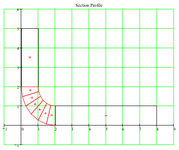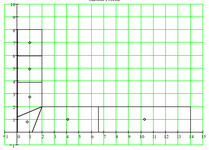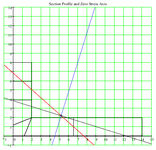ArunKumar Bala
Aerospace
Hi all, I am trying generate one spreadsheet program which will give answer for moment of inertia using the inputted coordinates. can any body guides me how can we input the formulas for coordinate systems. I have come across various books like Niu, Megson, Bruhn which all tells for particular shapes only with predetermined formulas but i am not able to see for inertia using coordinate systems.
Note : Coordinate systems will generate various complex shapes which is used in aerospace industry like Z, C, I section with complex radius in 2D.
Note : Coordinate systems will generate various complex shapes which is used in aerospace industry like Z, C, I section with complex radius in 2D.



